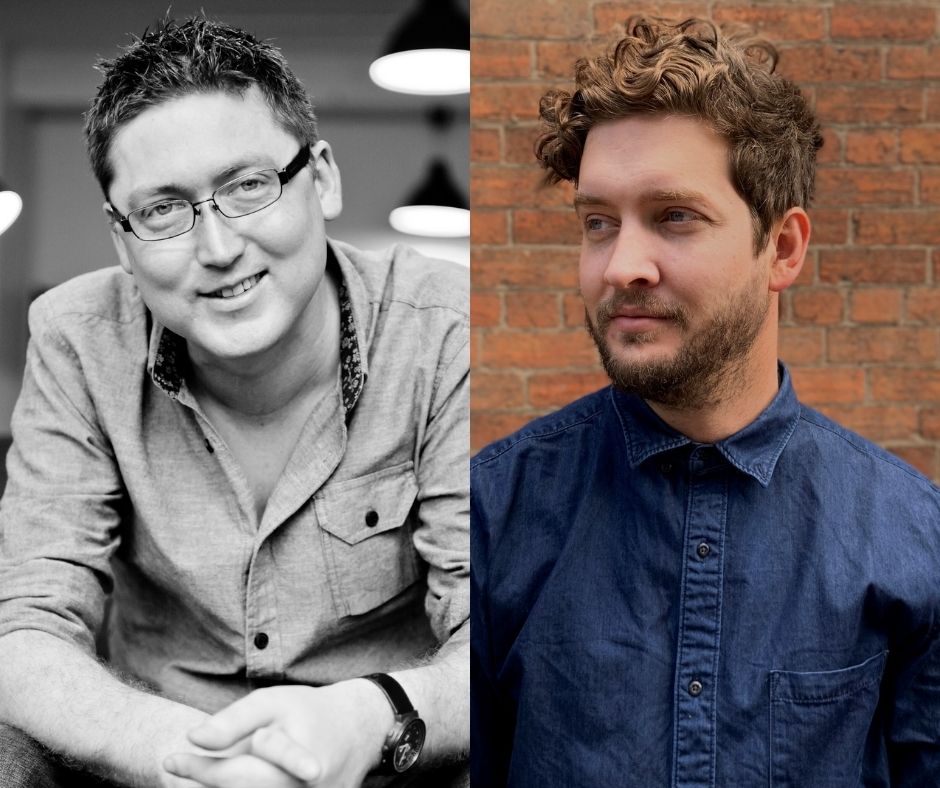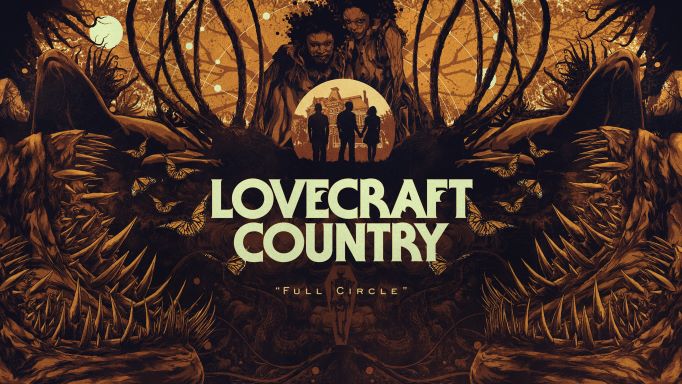There is a common thread between the television series True Detective, The Man in the High Castle, Westworld, Nine Perfect Strangers, and The Crown: the contribution of Aussies Raoul Marks and Patrick Clair.
The directors of production studio Antibody have been responsible for crafting main title sequences across streaming and network platforms in the eight years they have been working together, with Clair assuming the role of creative director and Marks acting as the art director and lead compositor.
It’s a creative partnership that has spawned more than 20 Outstanding Main Title Design Emmy nominations between them, as well as wins in 2014 and 2016 for True Detective and The Man in the High Castle, respectively.
They are again listed in the category this year for their work on HBO’s supernatural horror drama Lovecraft Country, in which they collaborated with renowned Melbourne illustrator Ken Taylor.
Taylor created a different piece of art for the title of each episode of the series, providing insights into different parts of the story.
Clair told IF it made for a “very exciting creative process”.
“I’ve been a huge admirer of Ken for probably about 10 years now,” he said,
“He does amazing pop art-infused, highly detailed illustrative posters that are most often printed two or three times onto poster paper and released in relation with movie releases and bands commissioning to do posters for their tours.
“I wanted to get him to make a title sequence with us for ages and then Lovecraft Country came along and it was such a better match than anything we had proposed before.”
The drama represented the first time Clair and Marks had been required to produce different a title for each episode, instead of one that is repeated across the series.
Clair said while the format presented its own challenges, it was becoming more popular among programs.
“It’s certainly what we are being asked for at the moment,” he said.
“In some ways, it’s more challenging because instead of being able to tell a whole journey from A to B, you are more limited by the format of it.
“I think about Grand Designs when they say the hardest thing to build is minimalism because it’s harder to hide all the construction elements and I think it is like that – because you are so pared back, you need to have a good sense of what you are wanting to do.”

The early sequences of Marks and Clair are intertwined with “peak TV”, the period in the early 2010s where the number of scripted television shows on cable, digital and broadcast platforms began to spike.
When they first met in 2013, it was via their respective work in the video game industry, where they had both helped design trailers.
A collaboration for Ubisoft led to attention from the title sequence sector and the subsequent opportunity to pitch for True Detective.
Clair described the climate as a “new peak” in the ‘Golden Age of Television’ that began in the early 2000s with programs such as The Sopranos.
“It was around the time House of Cards had come out and that was really the first premium drama from a streaming network,” he said.
“By the end of 2015, 50 per cent of the titles we were making were from the streaming networks.
“Just as HBO had staked its claim to making premium shows that great big title sequences at the front of them, Netflix, Hulu, and Amazon all wanted to get the attention of audiences by making television that was as mature, interesting and ambitious as the cable networks.
“So there was some real pressure in the years afterward that to be good, a show had to have a big and bold title sequence.”

It’s a process that can involve a team of up to ten people and take anywhere from 3-6 months, sometimes longer, from first contact to delivery.
After initial collaboration with writers from the show, Clair will use storyboards and conduct visual research, including bringing together references from a diverse range of mediums, including contemporary art, music videos, painting, illustrations, and photography.
Once an idea is decided on, Marks’ contribution becomes more pronounced as the sequence is brought to life out of pixels, often in CGI.
Marks said the pair spent a lot of time bouncing things back and forth off each other early on to try and figure out the flow and structure of the sequence.
“Things look very simple at that point but it is a very vital time and one of the most critical parts of the process for me,” he said.
“At the end, it’s taking that vision that we’ve set up loosely and trying to resolve it with imagery that matches the ambition of what we have planned out.”
The evolution of title sequences has taken another turn in recent years with streamers becoming more prominent.
Clair said different formats had both pros and cons for the sector.
“Around 2018, when the streamers were really becoming dominant, they were able to say that the formats that have emerged in television for the past 50 years have emerged because of uniquely broadcast pressures, such as the need to schedule things around an hour-long episode with ad breaks or around weekly appointment viewing,” he said.
“That’s where you saw more of a shift over to title cards and less of a focus on big sequences because the ‘skip now’ button came into play, which I think meant there is now a lower volume for title sequences.
“But on the flip side, it means that when a showrunner wants a title sequence, its because they think it has a really critical part to play in the story they are telling.”
The winners of the 73rd Emmy Awards will be announced on September 19 (US time).


